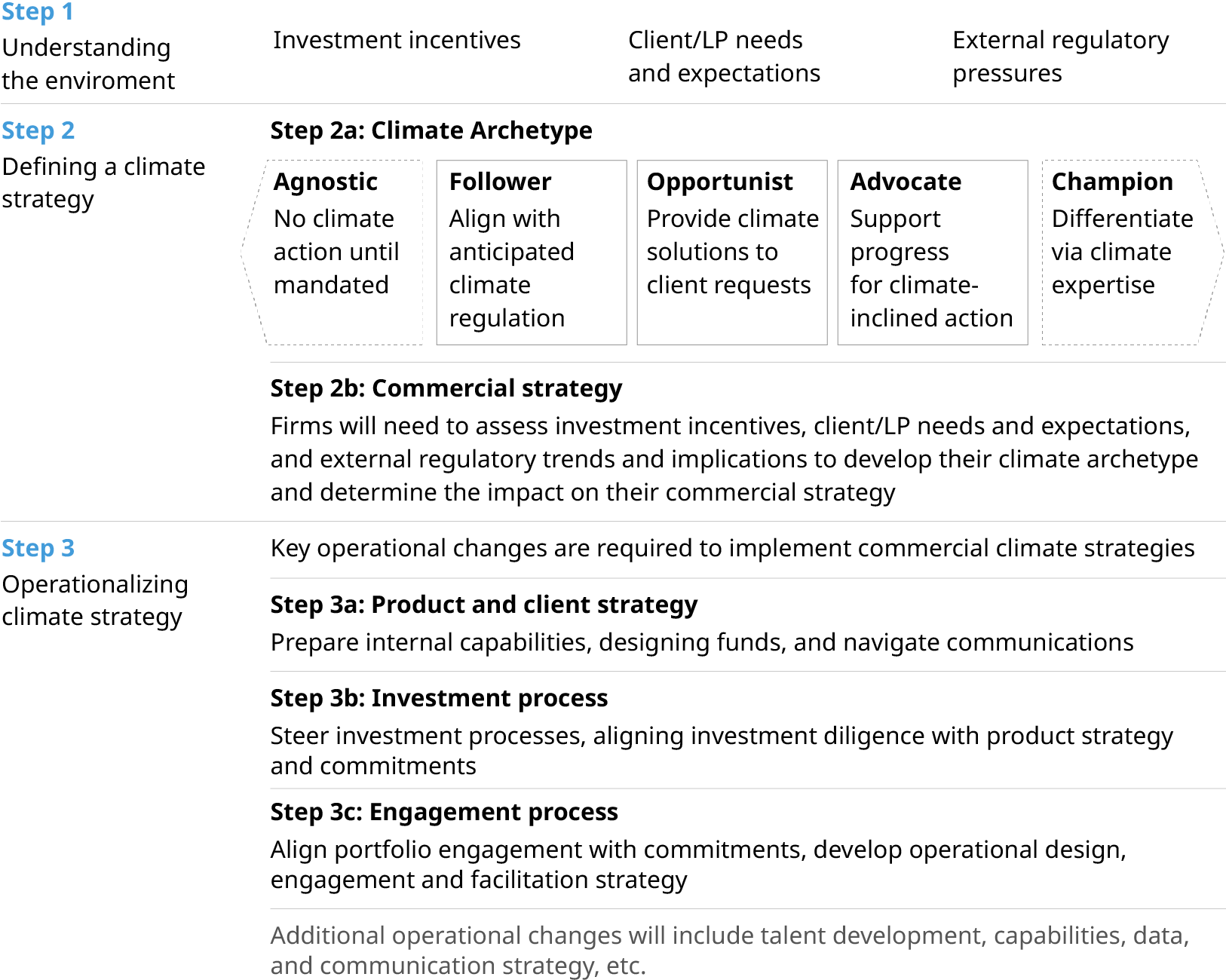The combination of increased investment incentives, evolving client needs and expectations, and greater regulatory focus has shifted the attention of asset managers towards climate strategy, and in particular, the opportunity for them in supporting the planet’s transition to a low carbon economy. While the headlines tend to be focused on the largest public markets managers, less focus has been trained on the actions of private markets managers and their position in the transition. We think that’s a mistake.
Private market approach to climate action
While public markets investors have faced obstacles in steering their portfolios towards a low carbon transition, private market investors — who can typically exert greater control over their portfolio companies, particularly when holding an equity position — are in a unique position to help allocate private capital to the most impactful investment opportunities and guide portfolio companies’ transitions. As such, certain private market asset managers have begun to introduce climate-focused funds and broader firm-level climate commitments.
However, private market approaches to climate action have too often been piecemeal, a box-checking exercise, or broad and without either understanding the impacts on firms’ commercial strategies or ability to operationalize. These approaches can lead to ineffective execution, reactive — rather than proactive — positioning to shifting external pressures, disconnected investment approaches, regulatory ramifications, and reputational blowback.
Certain private markets investors are beginning to capitalize on the commercial opportunities of decarbonization and play a powerful role in financing the transition. However, doing so successfully requires firms to establish a clear and comprehensive approach to climate action. In our report, Defining A Climate Strategy For Private Market Investors, we outline the key steps and specific considerations private market managers need to embrace to effectively define their ambition, craft a cohesive climate strategy, and develop the processes, capabilities, and tools necessary to operationalize.
How to define and operationalize a climate strategy
The development of a climate strategy requires understanding the forces shaping the industry, setting a clear ambition for the strategy, and identifying the organization’s competitive positioning with regards to that ambition. Below we showcase the elements in defining and operationalizing a climate strategy.

Download the PDF to read our full report on Defining A Climate Strategy For Private Market Investors.


